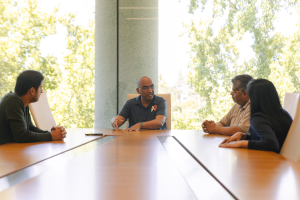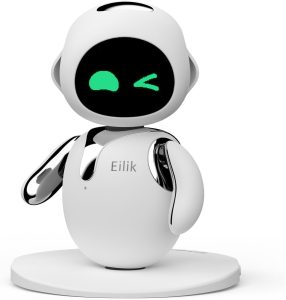Exploring the Latest in AI Technology

In the ever-evolving world of artificial intelligence, fresh advancements are continually reshaping the landscape. This week, several new AI tools and features have emerged, promising to enhance our daily interactions with technology. From voice assistants and sound effect generators to AI-driven gaming assistants and animation tools, there’s a lot to unpack.
One of the key highlights is OpenAI’s new GPT-4 voice assistant demo, showcasing its remarkable adaptability. The demo has generated buzz, reflecting the growing demand for more interactive voice applications. Meanwhile, 11 Labs has introduced a tool for creating sound effects, despite some limitations. Nvidia’s Project G Assist and other AI assistants promise to revolutionize gaming experiences, even if they’re not publicly available just yet.
Voice Assistant Developments
OpenAI has released a new use case demo for its GPT-4 voice assistant, showcasing its adaptability and versatility. The demo highlights the voice assistant’s ability to generate a wide range of character voices, although the feature is not yet available to the public. The demonstration is a response to the ongoing demand for more interactive and customizable voice applications.
Additionally, OpenAI’s voice assistant is expected to integrate with various applications across your phone, thanks to a new menu feature inside the ChatGPT app. This allows the app to access your microphone regardless of what you’re doing on your phone, making it a more seamless and integrated experience.
Sound Effects Generators
11 Labs has introduced a sound effects generator, adding to its existing voice generation capabilities. This new tool allows users to create various sound effects, complementing the adaptable voice features of OpenAI’s GPT-4 voice assistant. However, the new sound effects generator has some limitations, particularly when it comes to creating more complex sound effects based on longer prompts.
Despite these limitations, the tool demonstrates potential in generating simpler sound effects. When combined with other AI tools, like OpenAI’s voice assistant, it can be a valuable addition for content creators looking to enhance their projects with unique sounds.
Meta’s AudioBox also offers a reliable alternative for generating sound effects. Although it’s a research preview and not always accessible, it shows superior performance in generating specific sound effects compared to 11 Labs’ generator. This makes it a preferred choice for those needing high-quality sound effects for their projects.
AI Assistants for Gamers
Nvidia has developed Project G Assist, an AI assistant targeting gamers. This tool aims to provide gamers with useful tips and tricks, such as the best early game weapons or optimal display settings. Although not yet available to the public, Project G Assist shows promise in enhancing the gaming experience by offering real-time assistance and recommendations.
The assistant operates through a chat interface, making it easy for gamers to ask questions and receive instant, relevant answers. It can even help monitor and adjust computer settings, ensuring optimal performance during gameplay.
AI assistants are becoming increasingly prevalent, with several companies, including OpenAI, developing their versions. These tools are expected to become widely available soon, revolutionizing the way we interact with technology in various domains.
Animation with AI: Toon Crafter
Toon Crafter is an exciting new tool that generates animation frames from two input images. By providing a starting and ending frame, the tool creates seamless transitions, making it a valuable asset for animators and content creators. This technology is particularly useful for creating smooth and realistic animations without the need for extensive manual effort.
The tool has gained significant attention due to its impressive performance. For instance, it can animate subtle changes, such as a character’s smile or hair movement, with remarkable accuracy. This capability allows storytellers to bring their characters to life in a more dynamic and engaging way.
While the resolution and number of frames could be improved, Toon Crafter sets a new standard for AI-generated animation. It can be paired with other AI tools for creating music, sound effects, and voices, allowing for the production of fully-realized animated stories. This makes it a groundbreaking tool in the field of digital animation.
Music Creation with AI: Frederick AI
Frederick AI is a user-friendly tool designed to create music by generating individual instrument stems based on text prompts. This allows users to easily customize and extend their musical compositions, making it accessible even for those with little to no experience in music production. The interface is similar to popular software like GarageBand, offering a familiar and intuitive experience.
Users can choose from various presets and loops, adjusting pitch and adding effects to create unique tracks. The free version provides a limited number of monthly snippets, while the subscription version offers more extensive capabilities, making it a great entry point for aspiring music producers.
With Frederick AI, you can create entire songs by combining different stems, making it a valuable tool for anyone interested in music production. It pairs well with other AI tools, enabling the creation of complete multimedia projects with customized soundtracks and effects.
Ranking Language Models: Scale AI’s LLM Leaderboard
Scale AI has introduced a new leaderboard to rank large language models (LLMs) based on various criteria, such as coding, math, instruction following, and language understanding. This new ranking method aims to provide more reliable and unbiased evaluations compared to existing benchmarks.
The leaderboard’s independent evaluation process avoids potential biases by not disclosing the exact questions asked during assessments. This helps ensure that the rankings reflect the models’ true performance rather than being influenced by specific training data.
The leaderboard offers valuable insights, particularly in instruction following, where GPT-4 excels. It serves as a useful resource for anyone interested in understanding the capabilities and limitations of different LLMs, helping to guide decisions in AI research and application development.
Improvements to Udio: More Music Features
Udio has recently updated its music generation capabilities, extending the maximum song length from 30 seconds to 2 minutes. This allows users to create more complete and cohesive songs without needing to piece together multiple shorter segments. The update also includes the ability to download high-quality WAV files, making the generated music more suitable for professional use.
Additionally, Udio now offers a feature that allows users to extend their own audio clips. This means you can upload your own recordings and use the AI to add more duration, creating extended versions of your original content. This unique feature provides greater flexibility and creative opportunities for users.
These updates make Udio a more robust tool for music creation, catering to both amateur and professional musicians. It continues to evolve, offering enhanced functionalities that align with the needs of its users.
New Search Engine Features: Perplexity Pages
Perplexity, an AI-powered search engine, has launched Perplexity Pages, a new feature that allows users to create and publish their own AI-generated articles. This tool aims to streamline the creation of digital content by integrating article writing directly into the search engine.
Perplexity Pages offers a similar experience to platforms like WordPress and Medium, but with a stronger emphasis on AI-generated content. This approach provides greater control and transparency, as the AI involvement in article creation is openly acknowledged.
The feature is designed to combat the flood of AI-generated articles on the internet by offering a more centralized and trustworthy source of content. It’s a significant step towards ensuring the quality and reliability of online information, making Perplexity Pages a notable development in digital publishing.
Showrunner: Future of AI-Generated Shows
Showrunner is an innovative tool that aims to revolutionize the creation of TV shows by using AI to generate entire episodes based on user prompts. Although not yet available to the public, it promises to offer a highly interactive and customizable viewing experience.
Users will be able to write prompts to generate new shows or extend existing ones, providing endless possibilities for content creation. The tool also features a simulated environment where AI agents live out daily activities, generating narratives that can be turned into shows.
This groundbreaking approach could change the way we consume and create media, offering a highly personalized and engaging experience. Showrunner represents the cutting edge of AI in entertainment, opening up new avenues for storytelling and content development.
It’s clear that the advancements in AI technology are moving at a rapid pace, revolutionizing various fields from voice assistants to gaming, animation, and music creation. These developments are making our interactions with technology more seamless and immersive. OpenAI, Nvidia, and other companies are pushing the boundaries of what’s possible, and it’s only a matter of time before these innovations become a part of our daily lives. The future of AI looks incredibly promising and exciting.





